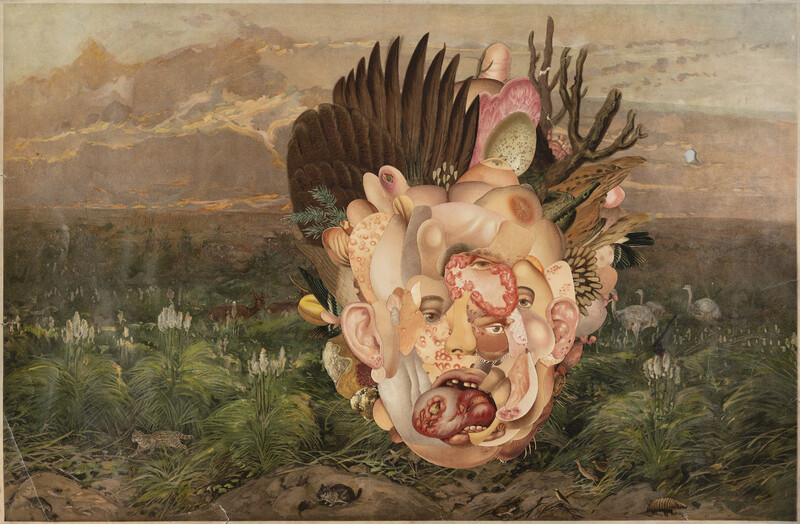- 10.0Cover
- 10.1Ghost PopulationsInes Doujak
- 10.2How to Read this Broadsheet
- 10.3BluntRinaldo Walcott
- 10.4COVID-19, Language, and IdentityAi Taniguchi
- 10.5Finding LanguageVanessa Dion Fletcher
- 10.6The Abundance and Conflict of On-Demand WritingLouise Hickman
- 10.7UnlanguagingJesse Chun
- 10.8An Infinity of TracesMatt Nish-Lapidus
- 10.9Speaking Out: Researchers on Pandemic-Era HealthcareZoë Dodd, LLana James, Laura Rosella
- 10.10Living ScoresOana Avasilichioaei
- 10.11Pronouncing (Un)FreedomShama Rangwala
- 10.12blertJordan Scott
- 10.13In Protest and Choir SongMaandeeq Mohamed
- 10.14In Support of the CensureJacob Wren
- 10.15Glossary
Ghost Populations
- Ines Doujak

In the collage series Ghost Populations, Ines Doujak assembles imagery from twentieth-century historical prints to create phantasmagorical entities—strange bodies and faces materialized from botanical charts and medical illustrations. By turns monstrous and celebratory, tender and fraught, Doujak’s collages attest to the complex and hybrid relations between humans, animals, plants, bacteria, viruses, and other non-living things.
In anthropology and population genetics, the term “ghost population” describes the missing genetic relatives of a known population: a group of humans who have left traces in the DNA of their descendants but no physical archaeological evidence, and whose existence can only be inferred statistically. In the cover image of the same name, Doujak envisions a hybrid entity whose form is pieced together from human and non-human kin. Against the backdrop of a faded and scratched landscape from a period of colonial natural history, the being appears to speak with multiple voices—through disease, struggle, decay, and recombination. What utterances must come from our current moment of collapse, transformation, and repair?
See Connections ⤴